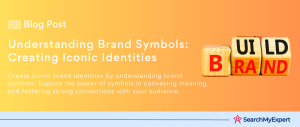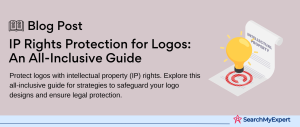Understanding the Role and Redefinition of Logos in Branding
A logo serves as the cornerstone of a brand’s identity, acting as a visual symbol that encapsulates a company’s essence, values, and uniqueness. In today’s fast-paced market, a well-designed logo is more than just an aesthetic choice; it’s a critical component of a brand’s communication strategy. Logos, through their colors, shapes, and typography, create a tangible and memorable representation of a brand, making them indispensable in the realm of marketing and branding.
The Necessity of Logo Redesigns in Evolving Markets
As markets evolve and consumer preferences shift, it becomes imperative for brands to reassess and sometimes reinvent their visual identity to stay relevant and competitive. Logo redesigns are often driven by various factors, such as changes in company strategy, mergers and acquisitions, or the need to connect with new demographics. A well-executed logo redesign can signify a brand’s growth, adaptability, and forward-thinking approach, resonating with both existing and potential customers.
Logo Redesign vs. Logo Refresh: Understanding the Difference
When discussing the transformation of a brand’s logo, it’s essential to differentiate between a “redesign” and a “refresh.” A logo redesign implies a significant change, often involving a complete overhaul of the existing design. This might include altering the logo’s core elements, introducing new colors, or changing the overall style to reflect a new company direction or philosophy.
On the other hand, a logo refresh is a more subtle approach. It retains the essence of the original design while making small yet impactful updates. This could involve modernizing the font, tweaking the color palette, or refining the graphics to make the logo more contemporary and aligned with current design trends.
Examples of Successful Logo Redesigns and Refreshes
To illustrate these concepts, let’s look at some renowned examples:
- Apple Inc. – The evolution of Apple’s logo from the rainbow-colored apple to the sleek, monochromatic design is a classic example of a redesign that aligns with the company’s progression towards minimalism and modernity.
- Coca-Cola – Coca-Cola’s periodic refreshes, while keeping their iconic cursive font, show how subtle changes can modernize a logo without losing its historical charm.
Evaluating When a Logo Redesign Becomes Essential
A logo is not just a static symbol; it evolves as the brand it represents grows and changes. Recognizing when a logo needs an update is critical for maintaining a brand’s relevance and appeal. Here, we explore the key indicators and factors that suggest a logo needs change and differentiate between superficial updates and significant redesigns.
Key Indicators Suggesting a Logo Needs Change
- Outdated Appearance:
A logo that looks outdated can harm a brand’s perception, making it seem out of touch with current trends and customer expectations. Elements like old-fashioned fonts or graphics that no longer resonate with contemporary aesthetics can signal the need for a redesign. - Misalignment with Brand Values: As companies evolve, their values and mission may change. If a logo no longer reflects these core values or the brand’s personality, it’s time for a redesign to realign the visual identity with the brand ethos.
- Lack of Memorability or Distinctiveness: In a saturated market, a logo must be memorable and distinctive to stand out. If a logo fails to make an impression or is easily confused with competitors, it might be time to consider a redesign.
Industry Trends and Target Audience Evolution as Triggers
- Shifting Industry Trends: Industries evolve, and with them, design trends do too. A logo redesign may be necessary to stay competitive and relevant in an industry that’s undergoing significant changes.
- Evolving Target Audience:
As demographics shift, brands often need to adapt their logos to appeal to new or changing target audiences. This might involve updating the logo to resonate with younger generations or different cultural sensibilities.
Brand Growth and Expansion Necessitating Redesign
As a company grows and expands, whether through new product lines, global expansion, or a shift in strategy, its logo must reflect this evolution. A logo that is suitable for a small start-up might not be appropriate for a multinational corporation.
Differentiating Between Cosmetic Updates and Full Redesigns
- Cosmetic Updates:
These are minor changes made to a logo to refresh its appearance while keeping its core identity intact. Examples include updating color schemes, refining typography, or modernizing graphic elements. - Deeper Brand Evolutions:
Sometimes, a brand undergoes a fundamental shift in its mission, values, or target market. In such cases, a full redesign is necessary. This involves rethinking the logo from the ground up to reflect the new direction of the brand.
Defining Your Brand Identity
The process of redesigning a logo begins with a deep understanding of your brand’s identity. This step is pivotal in ensuring that your new logo is not just aesthetically pleasing, but also a true reflection of what your brand stands for.
Understanding Your Brand’s Core Values and Mission
- Core Values: These are the principles that guide your company. A logo should be a visual representation of these values, conveying messages like trust, innovation, or sustainability, depending on what your brand prioritizes.
- Mission:
Your brand’s mission statement defines its purpose. The logo should encapsulate this purpose, serving as a constant reminder of what the brand strives to achieve. - Target Audience Preferences:
Knowing your audience is crucial. A successful logo redesign considers the preferences, demographics, and cultural nuances of its intended audience.
The Role of Brand Audits and Competitor Analysis in Informing Redesign
- Brand Audits: This involves a thorough analysis of your current brand identity, including how your logo is perceived internally and externally. This assessment can reveal strengths to retain and weaknesses to address in the redesign.
- Competitor Analysis:
Understanding how your competitors position themselves through their logos can provide valuable insights. This analysis helps in differentiating your brand and avoiding common design elements used by competitors.
Utilizing Tools for Solidifying Brand’s Visual Direction
- Mood Boards:
Creating mood boards is an effective way to visualize the aesthetic and emotional tone you want your logo to convey. They can include color palettes, typography, imagery, and logos of other brands that align with your vision. - Brand Personality Profiles:
These profiles outline the human characteristics associated with your brand. Is your brand friendly and approachable or professional and authoritative? These traits should be reflected in your logo’s design.
Striking the Balance in Logo Redesign: Evolution or Revolution?
When embarking on a logo redesign, brands face a critical decision: should they opt for an evolutionary approach that retains recognizable elements or a revolutionary approach that signifies a complete reinvention? Both strategies come with their own set of merits, risks, and benefits, and the choice largely depends on the brand’s current position and future aspirations.
Evolutionary Approach: Updating with Finesse
- Retaining Recognizable Elements:
This approach involves making subtle changes to the logo while keeping its most identifiable aspects intact. This could mean updating the color scheme, tweaking the typography, or refining graphic elements. - Benefits: An evolutionary approach maintains brand recognition and customer familiarity. It reassures existing customers that they are interacting with the brand they trust while simultaneously refreshing the brand’s image.
- Risks:
The key risk here is being too subtle, leading to a redesign that goes unnoticed. There’s also the danger of appearing outdated if the changes aren’t substantial enough to align with current trends.
Revolutionary Approach: Embracing Complete Reinvention
- Complete Overhaul: This approach involves a radical change in the logo design, signaling a significant shift in the brand’s direction, values, or offerings.
- Applicability: This is particularly relevant for brands undergoing major transformations, such as pivoting to a new line of business, targeting a completely different audience, or revamping their brand ethos.
- Benefits:
A revolutionary approach can reinvigorate a brand, attract new audiences, and make a strong statement about the brand’s new direction. - Risks:
The primary risk is losing brand recognition and alienating existing customers who feel disconnected from the new identity. There’s also the challenge of effectively communicating the reasons behind such a drastic change.
Analyzing the Risks and Benefits
- Brand Recognition: An evolutionary approach safeguards brand recognition, while a revolutionary approach might require re-establishing it.
- Audience Familiarity:
Evolution tends to cater to existing audience familiarity, whereas revolution may appeal to new demographics but risk losing current loyalists. - Market Position:
The choice also depends on the brand’s current market position. A well-established brand might prefer evolution, whereas a brand looking to make a bold statement or reinvent itself might choose revolution.
Mastering the Logo Redesign Journey: Iteration and Feedback
Embarking on a logo redesign is a journey that involves creativity, strategic thinking, and iterative refinement. This journey, from initial brainstorming to the final design, is crucial to achieving a logo that not only looks great but also encapsulates the essence of the brand.
Step-by-Step Logo Design Process
- Brainstorming: This initial stage is all about generating ideas. It involves exploring different concepts, themes, and inspirations that resonate with the brand’s identity. This could be a collaborative process involving team members from various departments to ensure a diversity of perspectives.
- Sketching: Once ideas are gathered, the next step is to sketch them out. This process converts abstract concepts into visual representations, allowing for a clearer understanding of how they might look in reality. Sketching can range from rough doodles to more detailed drawings.
- Digital Mockups:
After narrowing down the sketches, the next step is to create digital versions. This involves using design software to bring sketches to life with precise shapes, colors, and typography. Digital mockups provide a realistic view of how the logo will look in various applications.
Importance of Feedback in the Design Iteration Process
- Diverse Stakeholder Input: Feedback from different stakeholders, including management, marketing teams, and even employees, is essential. They can provide insights into how the logo aligns with the brand’s values and goals.
- Target Audience Feedback:
It’s crucial to understand how the target audience perceives the logo. Their feedback can be invaluable in making sure the logo resonates with the people it’s intended to reach. - Iterative Refinement: Based on the feedback, the logo goes through multiple iterations. This process helps in fine-tuning the design, ensuring it not only looks good but also communicates the intended message effectively.
The Necessity of Multiple Design Options and Revisions
- Exploring Various Options:
Creating multiple design options allows for a comparative analysis of different approaches. It opens up possibilities and provides a safety net in case one concept doesn’t work as expected. - Revisions for Perfection: Each design iteration brings the logo closer to perfection. Revisions are an integral part of the process, helping to refine the logo based on practical feedback and testing.
- Finalizing the Optimal Logo:
The iterative process culminates in the selection of the final logo. This logo is a refined product of brainstorming, feedback, and meticulous revisions, ensuring it’s the best representation of the brand’s identity.
Implementing the New Logo
Implementing a new logo involves a strategic approach to ensure a smooth transition and maintain brand consistency. Here’s a step-by-step guide for rolling out the new logo:
Internal Awareness and Training:
- Pre-Rollout Meetings: Organize meetings with all departments to introduce the new logo and the rationale behind the change.
- Training Sessions: Conduct training for employees, especially marketing and communications teams, to understand the new brand guidelines.
- Internal Launch:
Officially launch the logo internally, allowing employees to get familiar with it before it goes public.
Updating Marketing Materials and Brand Touchpoints:
- Inventory Assessment:
Make an inventory of all current marketing materials, signage, business cards, and other brand touchpoints. - Prioritization:
Prioritize the updating process based on visibility and usage frequency. High-impact materials like outdoor signage and digital assets should be updated first. - Design Revisions:
Work with the design team to update marketing materials, incorporating the new logo while adhering to the updated brand guidelines.
Digital Presence Overhaul:
- Website Update:
The company’s website should reflect the new logo and brand identity immediately after the public launch. - Social Media Visuals: Update all social media profiles and banners with the new logo and ensure all future posts are in line with the new brand aesthetics.
- Email Signatures: Ensure that all employees update their email signatures to include the new logo.
External Communication and Launch:
- Press Release:
Prepare a press release explaining the reason for the change, the story behind the new logo, and the vision it represents. - Customer Communication: Inform customers about the change through emails, newsletters, and social media posts.
- Launch Event: Consider organizing a launch event or an online campaign to unveil the new logo, creating buzz and excitement around the brand.
Packaging and Merchandise Update:
- Packaging Redesign: Update packaging designs to incorporate the new logo. This may be a gradual process for products with longer shelf lives.
- Merchandise: If the company uses branded merchandise, plan for the phase-out of old items and the introduction of new merchandise featuring the new logo.
Consistency and Quality Control:
- Brand Guidelines Manual: Ensure that a comprehensive brand guidelines manual is available to all stakeholders.
- Quality Checks: Regularly conduct quality checks to ensure consistency across various platforms and touchpoints.
- Feedback Loop: Establish a feedback mechanism to identify areas where the old logo might still be in use and to gather insights on the new logo’s reception.
Monitoring and Evaluation:
- Track Impact:
Monitor the impact of the new logo on brand perception, customer engagement, and market presence. - Adjustments if Needed: Be prepared to make minor adjustments based on customer feedback and market response.
Measuring Success and Ongoing Evaluation
To effectively measure the success of a logo redesign and ensure its ongoing relevance, it’s important to establish clear metrics and maintain regular evaluations. Here are key aspects to consider:
Defining Metrics for Success:
- Brand Awareness:
Measure changes in brand recognition before and after the logo redesign. This can be done through surveys, social media monitoring, and web analytics to track brand mentions and visibility. - Positive Reception:
Assess customer and stakeholder feedback regarding the new logo. Analyze sentiment in social media reactions, customer reviews, and survey responses. - Audience Engagement:
Track engagement metrics such as likes, shares, comments on social media posts featuring the new logo, and the click-through rates on emails or ads with the new logo. Monitor website traffic, especially visits to the page explaining the logo change. - Sales and Marketing Performance:
Monitor sales figures and marketing campaign performance post-launch. An increase can indicate successful brand repositioning through the logo redesign. - Media Coverage and Publicity: Evaluate the extent and tone of media coverage received for the logo launch.
Ongoing Monitoring and Evaluation:
- Regular Reviews:
Schedule periodic reviews to assess the performance of the new logo against the defined metrics. - Market Research: Continuously conduct market research to understand how the logo is perceived in comparison to competitors.
- Internal Feedback: Regularly gather feedback from employees across departments to understand internal reception and alignment with the brand identity.
Adapting and Updating the Logo in the Future:
- Stay Updated with Trends: Keep abreast of design trends and consumer preferences. A logo should evolve to remain relevant and appealing.
- Flexibility in Design: Consider designing the logo with some level of flexibility to allow minor adaptations without losing its core identity.
- Brand Evolution Awareness: As the company grows and evolves, the logo should reflect this change. Be open to making adjustments that align with significant brand developments.
- Customer Feedback and Market Research:
Regularly engage with customers and conduct market research to gather insights that can inform future logo updates. - Consistency in Core Elements: Maintain key elements of the logo that are strongly associated with the brand, ensuring recognizability and continuity.
Documenting and Communicating Changes:
- Documenting Logo Evolution: Keep a record of changes and the rationale behind them. This documentation is crucial for maintaining brand history and for future reference.
- Transparent Communication: When updating the logo, communicate transparently with stakeholders about the reasons and the intended impact of the changes.
Conclusion:
In conclusion, a logo redesign is more than just a cosmetic change; it’s a strategic move that reflects a brand’s evolution and future vision. Effective implementation requires meticulous planning, from raising internal awareness to updating all brand touchpoints. Measuring success through metrics like brand awareness, audience engagement, and positive reception is crucial. Moreover, ongoing evaluation and adaptability are key to ensuring the logo continues to resonate with both the market and the brand’s identity. By following these steps, businesses can navigate the complexities of a logo redesign, ensuring it serves as a powerful symbol of their brand’s story and values.
Elevate your brand with Logo Design Companies.
Table of Contents
Toggle






